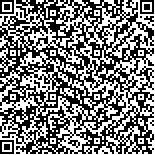| Quote
: |
林伟弟,杨松,王瑞安,孟灵,钟青华,谢玲瑶,段霞霞,谭佳旋,蒋学余.电针颈夹脊穴对神经根型颈椎病神经病理性疼痛模型大鼠脊髓背角CX3CL1、AC3、CGRP和SP物质表达的影响[J].湖南中医药大学学报英文版,2023,43(4):705-711.[Click to copy
] |
|
| |
|
|
| This paper
:Browser 3660times Download 1319times |
| 电针颈夹脊穴对神经根型颈椎病神经病理性疼痛模型大鼠脊髓背角CX3CL1、AC3、CGRP和SP物质表达的影响 |
| 林伟弟,杨松,王瑞安,孟灵,钟青华,谢玲瑶,段霞霞,谭佳旋,蒋学余 |
| (湖南中医药大学, 湖南 长沙 410208;岳阳市中医医院, 湖南 岳阳 414000) |
| 摘要: |
| 目的 观察电针颈夹脊穴对神经根型颈椎病(cervical spondylotic radiculopathy, CSR)神经病理性疼痛大鼠脊髓背角CX3C趋化因子配体1(C-X3-C motif chemokine ligand 1, CX3CL1)、腺苷酸环化酶3(adenylate cyclase 3, AC3)、降钙素基因相关肽(calcitonin gene-related peptide, CGRP)和P物质(substance P, SP)表达的影响,探讨电针颈夹脊穴治疗CSR引起的神经病理性疼痛的相关镇痛机制。方法 48只雄性SD大鼠随机分为空白组、假手术组、模型组和电针组,每组12只。电针组给予电针双侧C6、C7夹脊穴,模型组和假手术组在电针组干预同时间点进行绑缚处置。观察大鼠在术前第1天、术后第14 天、术后第28天患侧前足热刺激缩足反射潜伏期(paw withdrawal thermal latency, PWTL)的变化,采用Western blot法和Real time PCR法检测患侧脊髓背角CX3CL1蛋白和基因的表达,采用免疫荧光法检测患侧脊髓背角AC3、CGRP和SP的表达。结果 各时间点与空白组比较,假手术组患侧前足PWTL差异均无统计学意义(P>0.05);术后第14天,与假手术组比较,模型组和电针组大鼠患侧前足PWTL均减少(P<0.01);术后第28天,与模型组大鼠比较,电针组大鼠患侧前足PWTL升高(P<0.01);电针组大鼠术后第28天患侧前足PWTL较术后第14天升高(P<0.01)。与空白组比较,假手术组大鼠患侧脊髓背角CX3CL1、AC3、CGRP、SP蛋白和CX3CL1基因的表达差异均无统计学意义(P>0.05);与假手术组比较,模型组大鼠患侧脊髓背角CX3CL1、AC3、CGRP、SP蛋白和CX3CL1基因的表达均明显升高(P<0.01);与模型组相比,电针组大鼠患侧脊髓背角CX3CL1、AC3、CGRP、SP蛋白和CX3CL1基因的表达均明显降低(P<0.05)。结论 电针颈夹脊穴治能够改善CSR神经病理性疼痛模型大鼠的热痛觉过敏,并通过抑制脊髓背角初级感觉神经元的CX3CL1、AC3、CGRP和SP合成表达,减轻了神经炎性反应,降低脊髓背角初级感觉神经元的兴奋性,从而阻碍神经中枢的敏化。 |
| 关键词: 神经根型颈椎病 电针 神经病理性疼痛 脊髓背角 CX3C趋化因子配体1 腺苷酸环化酶3 降钙素基因相关肽 P物质 |
| DOI:10.3969/j.issn.1674-070X.2023.04.021 |
| Received:August 09, 2022 |
| 基金项目:科技部研发计划重点专项(2018YFC1707806);湖南省自然科学基金面上项目(2019JJ40217);湖南省临床医疗技术创新引导项目(S2020SFYLJS0039)。 |
|
| Effects of electroacupuncture at cervical points of Jiaji (EX-B2) on the expression levels of CX3CL1, AC3, CGRP and substance P in the spinal dorsal horn of rats with neuropathic pain due to cervical spondylotic radiculopathy |
| LIN Weidi,YANG Song,WANG Rui'an,MENG Ling,ZHONG Qinghua,XIE Lingyao,DUAN Xiaxia,TAN Jiaxuan,JIANG Xueyu |
| (Hunan University of Chinese Medicine, Changsha, Hunan 410208, China;Yueyang Hospital of Chinese Medicine, Yueyang, Hunan 414000, China) |
| Abstract: |
| Objective To observe the effects of electroacupuncture at cervical points of Jiaji (EX-B2) on the expression levels of C-X3-C motif chemokine ligand 1 (CX3CL1), adenylate cyclase 3 (AC3), calcitonin gene-related peptide (CGRP) and substance P (SP) in the spinal dorsal horn of rats with neuropathic pain caused by cervical spondylotic radiculopathy (CRS), and to investigate its analgesic mechanism in such condition.Methods A total of 48 male SD rats were randomly divided into blank group, sham-operated group model group, and electroacupuncture group, with 12 rats in each group. Electroacupuncture was performed at bilateral C6-C7 Jiaji (EX-B2) points of rats in electroacupuncture group. At the same time, rats in model group and sham-operated group were only bundled, without any other intervention. The changes of paw thermal withdrawal latency (PWTL) of the affected rat forefoot after thermal stimulation were observed 1 d before operation, as well as 14 and 28 d after operation. Western blot and real-time PCR were used to test the expression levels of CX3CL1 protein and gene in the spinal dorsal horn of the affected side, respectively. The expression levels of AC3, CGRP and SP in the same spot were determined by immunofluorescence.Results Compared with the blank group at each time point, there was no statistically significant difference in PWTL of the affected rat forefoot in sham-operated group (P>0.05); on the 14th day after operation, compared with sham-operated group, the PWTL of the affected rat forefoot in model group and electroacupuncture group decreased (P<0.01); on the 28th day after operation, compared with model group, the PWTL of the affected rat forefoot in electroacupuncture group increased (P<0.01), and it was higher than that on the 14th day after operation (P<0.01). Compared with blank group, there was no significant difference in the expression levels of CX3CL1, AC3, CGRP, SP proteins, and CX3CL1 gene in the dorsal horn of the affected rat spinal cord in sham-operated group (P>0.05); compared with sham-operated group, those indices in model group significantly went up (P<0.01); compared with model group, those indices in electroacupuncture group significantly dropped (P<0.05).Conclusion Electroacupuncture at cervical points of Jiaji (EX-B2) can improve the thermal hyperalgesia of rats with CSR neuropathic pain, and reduce the neuroinflammatory response and excitability of the primary sensory neurons in the spinal dorsal horn by inhibiting the synthetic expressions of CX3CL1, AC3, CGRP and SP, thus impeding the sensitization of the nerve center. |
| Key words: ecervical spondylotic radiculopathy electroacupuncture neuropathic pain spinal dorsal horn C-X3-C motif chemokine ligand 1 adenylate cyclase 3 calcitonin gene-related peptide substance P |
|

二维码(扫一下试试看!) |
|
|
|
|


